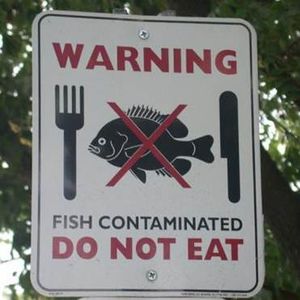Bioaccumulation: Difference between revisions
No edit summary |
m (1 revision imported) |
(No difference)
| |
Revision as of 01:47, 29 August 2017

There are places where toxin levels are high enough that entire food sources must be avoided.[1]
Bioaccumulation describes how the concentration of chemicals in an organism or species increases. This can occur when toxic substances are ingested.[2] These toxic substances are very difficult for organisms to excrete and thus accumulate in their tissues. An important result of bioaccumulation is biomagnification. Which describes when toxins magnify upward in the food chain, whereas bioaccumulation describes when toxins accumulate within a single organism.
One common pollutant that bioaccumulates is mercury, which specifically accumulates in fish.
Biomagnification is a very closely related idea. To learn more about it, click here.
References
- ↑ Cleanmarine internet:http://www.cleanmarinekrill.co.uk/blog/where-does-your-fish-oil-come-from-researchers-warn-of-higher-levels-of-toxins-in-larger-fish
- ↑ D. Mackay and a. Fraser, “Bioaccumulation of persistent organic chemicals: mechanisms and models,” Environmental Pollution, vol. 110, no. 3, pp. 375–391, Dec. 2000.

